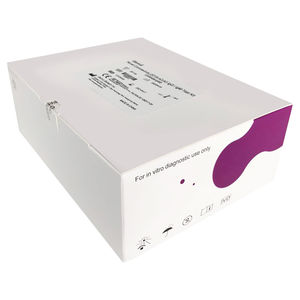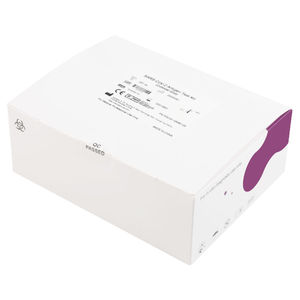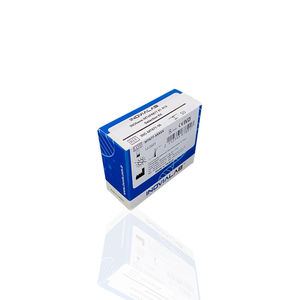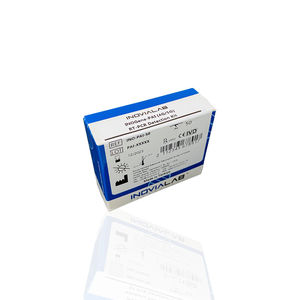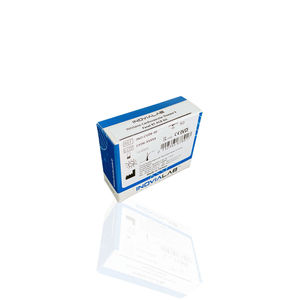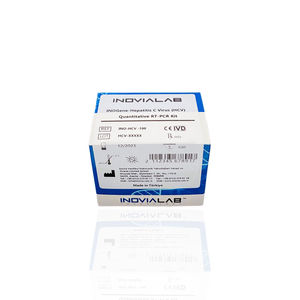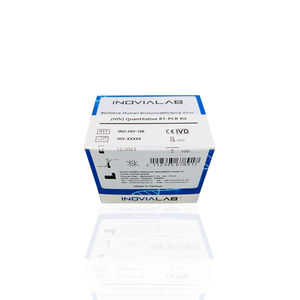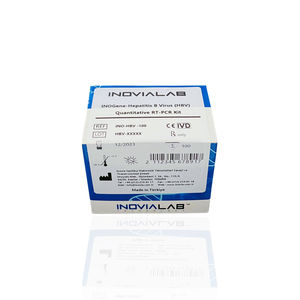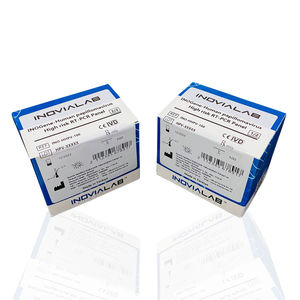
Infectious disease test kit INOGene-MPXVDNA extractionleadvirus
Add to favorites
Compare this product
fo_shop_gate_exact_title
Characteristics
- Applications
- for infectious diseases
- Application field
- DNA extraction
- Tested parameter
- lead
- Micro-organism
- virus, monkeypox
- Sample type
- laboratory
- Analysis mode
- for RT-PCR
Description
Monkeypox virus is a member of the Orthopoxvirus genus in the family Poxviridae which also includes the Variola virus and Cowpox virus.
It was initially discovered in 1958 as a pox-like disease that occurred in monkeys, and then in 1970, in people in the Democratic Republic of the Congo.
Monkeypox has become endemic in various African countries which transmits by close contact with lesions, body fluids, respiratory droplets, and contaminated materials.
In May 2022, multiple cases of monkeypox were identified in several non-endemic countries, such as Portugal, the United Kingdom, Spain, Sweden, Belgium, and the United States of America.
What are the symptoms ?
The incubation period (time from infection to symptoms) for monkeypox is usually 7−14 days but can range from 5−21 days.
Fever, rash, and swollen lymph nodes are common symptoms of monkeypox, which can lead to a variety of medical issues.
Specimen Collection and Sample Preparation
Laboratory personnel with the necessary experience and understanding should collect specimens while wearing personal protective equipment and, it is suggested to collect specimens with dry sterile lesions swabs from different lesions in different locations in the body.
Specimen swabs can be stored in sterile containers or 1.5 - 2 ml screw tubes as recommended by WHO and CDC or specimen swabs may be placed in viral transport media and transported with a temperature of 2-8°C for up to 2 days.
DNA extraction may be performed by any commercial DNA extraction/isolation kit according to the type of sample.
Catalogs
No catalogs are available for this product.
See all of INOVIALAB‘s catalogsRelated Searches
- Assay kit
- Blood assay kit
- Serum assay kit
- Immunoassay assay kit
- Plasma assay kit
- Infectious disease detection kit
- Molecular test kit
- Respiratory infection test kit
- Clinical assay kit
- Lateral flow test kit
- COVID-19 detection kit
- IgG test kit
- Laboratory detection kit
- Nasopharyngeal assay kit
- Coronavirus detection kit
- RT-PCR detection kit
- Cardiovascular disease assay kit
- Throat test kit
- Real-time detection kit
- Influenza A assay kit
*Prices are pre-tax. They exclude delivery charges and customs duties and do not include additional charges for installation or activation options. Prices are indicative only and may vary by country, with changes to the cost of raw materials and exchange rates.




